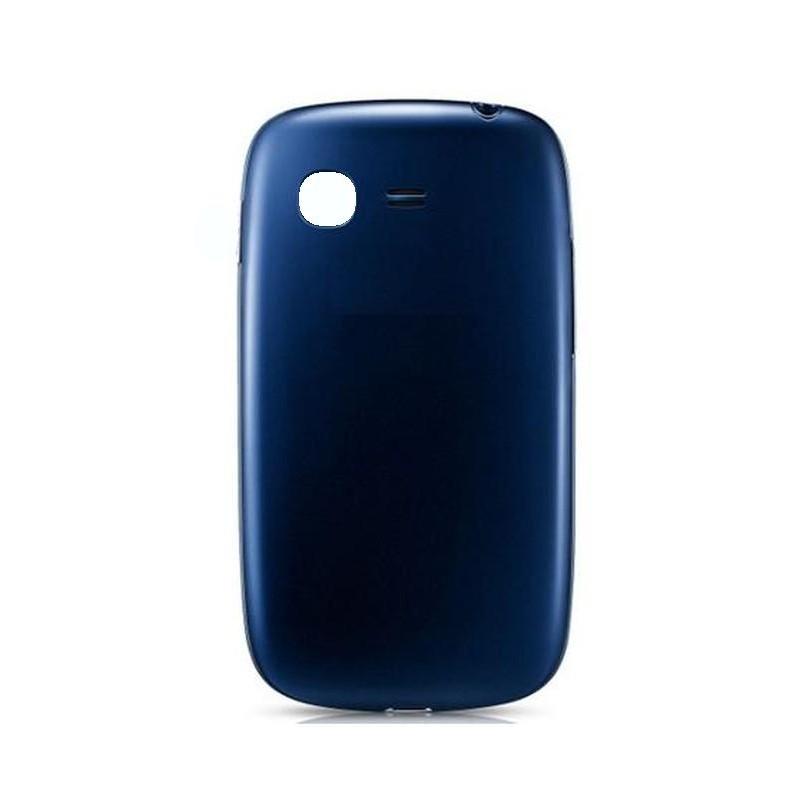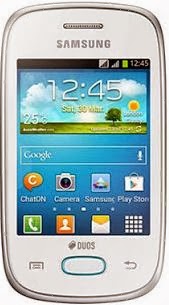- Samsung Galaxy Pocket Neo Gt S5312 User Manual Update
- Samsung Galaxy Pocket Neo Gt S5312 User Manual Youtube
- Samsung Galaxy Pocket Neo Gt S5312 User Manual Software
- Samsung Galaxy Pocket Neo Gt S5312 User Manual Download
Samsung Galaxy Pocket Neo S5310 Android smartphone. Announced Apr 2013. Features 3.0″ TFT display, 2 MP primary camera, 1200 mAh battery, 4 GB storage, 512 MB RAM. Galaxy Pocket Neo. Solutions & Tips, Download User Manual, Contact Us. Samsung Support Australia. Galaxy Pocket Neo. Solutions & Tips, Download User Manual, Contact Us. Samsung Support Australia. Skip to accessibility help. 5 of 308 Solutions Galaxy Pocket Neo (GT-S5310B). GT-S5312 - Samsung Galaxy Pocket Neo Duos Firmware Download. Device Model Region Version OS Build Changelist Download.
- Main display: TFT 256k colors 240 x 320 px (3.00″) 133 ppi
- Processor: Broadcom BCM21654 850 MHz
- Internal memory: 4 GB
- RAM: 512 MB
- Battery: Li-Ion 1200 mAh
- Camera: 2 Mpx, 1600x1200 px
- Memory cards: microSD, microSDHC, max 32 GB
- Rating:5.38 / 10 Voters: 44
Download Samsung Galaxy Pocket Neo Duos Manual / User Guide
General | |
|---|---|
| Other names: | GT-S5312, S5312 |
| Dimensions: | 105 x 57,8 x 11,8 mm |
| Weight: | 100,50 g |
| DualSIM: | Yes |
| GSM frequencies: | 850/900/1800/1900 |
| Standard UMTS: | 900/2100 |
| Standard battery: | Li-Ion 1200 mAh |
| Internal memory: | 4 GB |
| RAM memory: | 512 MB |
| Memory cards: | microSD, microSDHC, max 32 GB |
| Operating system: | Android 4.1 Jelly Bean |
| Processor: | Broadcom BCM21654 850 MHz |
Multimedia | |
|---|---|
| Main display: | TFT 256k colors 240 x 320 px (3.00″) 133 ppi |
| Touchscreen: | Yes |
| Digital camera: | 2 Mpx, 1600x1200 px |
| Video: | H.263, H.264, MPEG4 - 15 fps, 320x240 px |
| MP3: | Yes |
| Radio: | Yes |
Communication and messaging/data transfer | |
|---|---|
| Dictionary: | Yes, XT9 |
| EMS: | - |
| MMS: | Yes |
| Speakerphone: | Yes |
| Voice dial: | Yes |
| Call forwarding: | Yes |
| e-mail client: | Yes |
| IrDA: | - |
| Bluetooth: | Yes, v4.0 |
| GPRS: | Yes, class 12 |
| EDGE: | Yes, class 12 |
| WiFi: | Yes, v802.11 b/g/n |
| Hotspot WiFi: | - |
| DLNA: | - |
| WAP: | Yes, v2.0 |
| xHTML: | Yes |
| HSCSD: | - |
| HSDPA: | Yes, 7,20 Mbit/s |
| HSUPA: | Yes, 5,76 Mbit/s |
| HSPA: | Yes |
| HSPA+: | - |
| LTE: | - |
| NFC: | - |
| WiMAX: | - |
| USB | Yes, v2.0 |
| HDMI | - |
| GPS: | Yes |
| Push To Talk: | - |
Samsung Galaxy Pocket Neo Gt S5312 User Manual Update
Other features | |
|---|---|
| Java: | Yes, Dalvik |
| Calendar: | Yes |
| Watch: | Yes |
| Alarm: | Yes |
| Stopwatch: | Yes |
| Organizer: | Yes |
| Calculator: | Yes |
| Polyphony: | Yes, 64 głos. |

Samsung Galaxy Pocket Neo DuosGT-S5312, S5312specstechnical specificationsmanualUser ManualBedienungsanleitungDownloadHandbuchGuide de l’utilisateurAnvändarhandbokYouTubegsmarenaphonearena
Samsung GT-S5312, Samsung S5312
Despite our efforts to provide full and correct Samsung Galaxy Pocket Neo Duos specifications, there is always a possibility of making a mistake. If you see any wrong or incomplete data, please LET US KNOW.
Samsung Galaxy Mega 5.8 | Samsung Galaxy Mega 6.3 | Samsung Galaxy Mega 5.8 i9150 | Samsung E2350B | Samsung Galaxy Tab 2 WiFi | Samsung Galaxy Star Duos | Samsung Galaxy Star S5280 | Samsung E2262 | Samsung E3300 | Samsung Galaxy Note II LTE |
The newest phones
Samsung Galaxy Pocket Neo Gt S5312 User Manual Youtube
TOP 8
The newest manuals
Manual Samsung Galaxy A70s | Manual Huawei Mate 30 Pro 5G | Manual Huawei Mate 30 Pro | Manual Huawei Mate 30 | Manual LG K30 2019 Dual SIM | Manual Nokia 3310 3G |Manual-User-Guide.com > Samsung phones › Specs Samsung Galaxy Pocket Neo Duos
| Main display: TFT 256k colors 240 x 320 px (3.00″) 133 ppi |
| Android 4.1 Jelly Bean |
| Broadcom BCM21654 850 MHz |
| Li-Ion 1200 mAh |
| Internal memory: 4 GB |
| RAM memory: 512 MB |
| 2 Mpx, 1600x1200 px |
44 User Reviews
Samsung Galaxy Pocket Neo Gt S5312 User Manual Software
| Other names: | GT-S5312, S5312 |
| Dimensions: | 105 x 57,8 x 11,8 mm |
| Weight: | 100,50 g |
| DualSIM: | Yes |
| GSM frequencies: | 850/900/1800/1900 |
| Standard UMTS: | 900/2100 |
| Standard battery: | Li-Ion 1200 mAh |
| Internal memory: | 4 GB |
| RAM memory: | 512 MB |
| Memory cards: | microSD, microSDHC, max 32 GB |
| Operating system: | Android 4.1 Jelly Bean |
| Processor: | Broadcom BCM21654 850 MHz |

| Main display: | TFT 256k colors 240 x 320 px (3.00″) 133 ppi |
| Touchscreen: | Yes |
| Digital camera: | 2 Mpx, 1600x1200 px |
| Video: | H.263, H.264, MPEG4 - 15 fps, 320x240 px |
| MP3: | Yes |
| Radio: | Yes |
Samsung Galaxy Pocket Neo Gt S5312 User Manual Download
| Dictionary: | Yes, XT9 |
| EMS: | - |
| MMS: | Yes |
| Speakerphone: | Yes |
| Voice dial: | Yes |
| Call forwarding: | Yes |
| e-mail client: | Yes |
| IrDA: | - |
| Bluetooth: | Yes, v4.0 |
| GPRS: | Yes, class 12 |
| EDGE: | Yes, class 12 |
| WiFi: | Yes, v802.11 b/g/n |
| Hotspot WiFi: | - |
| DLNA: | - |
| WAP: | Yes, v2.0 |
| xHTML: | Yes |
| HSCSD: | - |
| HSDPA: | Yes, 7,20 Mbit/s |
| HSUPA: | Yes, 5,76 Mbit/s |
| HSPA: | Yes |
| HSPA+: | - |
| LTE: | - |
| NFC: | - |
| WiMAX: | - |
| USB | Yes, v2.0 |
| HDMI | - |
| GPS: | Yes |
| Push To Talk: | - |
| Java: | Yes, Dalvik |
| Calendar: | Yes |
| Watch: | Yes |
| Alarm: | Yes |
| Stopwatch: | Yes |
| Organizer: | Yes |
| Calculator: | Yes |
| Polyphony: | Yes, 64 głos. |
Mobile terms glossary
Dual-SIM This specifies whether a device is capable of supporting two SIM cards. The two major types of dual-SIM phones are active and standby. Dual-SIM Standby (DSS) requires the user to specify which of the two SIMs is able to make and receive calls, while Dual-SIM Active (DSA) enables both cards to receive calls at the same time. This latter feature usually requires an additional transceiver for the secondary SIM card, and as such consumes more battery life. More recent models feature Dual SIM Dual Standby (DSDS) technology which enables them to have two active SIMs with only one transceiver.
GSM stands for Global System for Mobile Communication and is the most popular 2G mobile phone standard in the world.
GSM is used by about 80% of all mobile phones - approximately 2 billion people across more than 212 countries.
The widespread use of the GSM standard has made it easy for most mobile phone users to use their phones overseas thanks to roaming agreements between operators using the same GSM standard.
GSM - then labelled Groupe Spécial Mobile was originally conceived back in 1982 as a European standard for mobile phones. The first GSM network went live in 1992 in Finland.
GSM introduced the concept of the SIM card (Subscriber Identity Module card) - a detachable smart card that lets users swap their phone number and contacts between handset.
3G - Analog cellular phones were the first generation while digital marked the second generation.3G is loosely defined, but generally includes high data speeds, always-on data access, and greater voice capacity.
The high data speeds are possibly the most prominent feature, and certainly the most hyped. They enable such advanced features as live, streaming video.
There are several different 3G technology standards. The most prevalent is UMTS, which is based on WCDMA (the terms WCDMA and UMTS are often used interchangeably).
MMS is an extension of the SMS (Short Message Service) protocol, allowing the exchange of text messages exceeding 160 characters. Unlike SMS, which is text-only, MMS can deliver a variety of media. This media may include up to forty seconds of video, audio, one image, or a slideshow of multiple images. MMS requires a third generation (3G) network to send large MMS messages (though smaller MMS messages may be transmitted over second generation networks using GPRS).
Bluetooth is an industry standard for contactless data transmission and communication between two devices. The range is usually 1 to 10 m and rarely more than 100 m. In some cases, distances of up to 200 m are possible.
GPRS stands for General Packet Radio Service and was the first popular data standard for mobile phones.
GPRS was used for WAP and MMS messages and offered modest connection speeds - typically 30-40 Kbit/s, although the theoretical maximum is 115 Kbit/s. GPRS is known as a 2.5G technology.
One of the early advantages of GPRS is that it s always on so no connection handshake is needed. It is still very popular, especially in the developing world.
The name of EDGE in full is Enhanced Data rates for GSM Evolution. This is a 2.75G technology further developed from the 2G and 2.5G technologies. Its data transmission speed is higher than that of GPRS and is closer to 3G technology.
Wi-Fi is a short-range wireless communication technology adopting the 802.11 wireless network standard. Most of the notebook computers, mobile phones or mobile Internet devices nowadays are able to support Wi-Fi wireless connection. The transmission speed of Wi-Fi can be up to 54 Mbps, while its communication range can reach 305 meters with high stability and reliability. At present, many coffee shops, shopping malls, hotels and airports offer chargeable or free-of-charge Wi-Fi wireless broadband. The service is also available on some public transport.
Universal Serial Bus (USB): A standard port that enables you to connect external devices (such as digital cameras, scanners, keyboards, and mice) to computers. The USB standard supports data transfer at three rates: low speed (1.5MBps), full speed (12Mbps) and high speed (480 MBps).
Mbps=million bits per second.
b>HDMI - High-Definition Multimedia Interface. HDMI is a high definition (HD) interface standard for the transmission of uncompressed digital audio visual data. HDMI can support 720i, 720p, 1080i and 1080p with up to eight channels of audio data. Since HDMI is fully digital and has no image compression the image quality should not suffer form any image degradation.